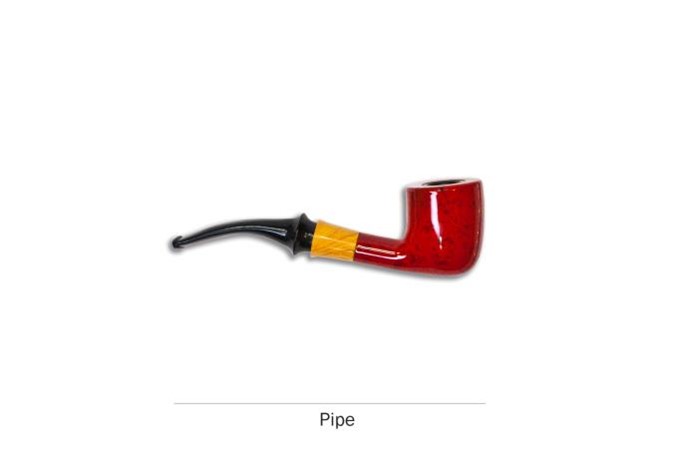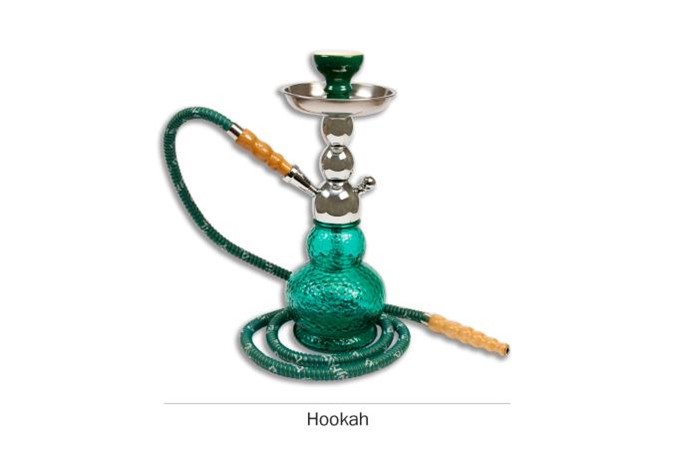Protocol - Perception of Tobacco Product Harm - Pipe Tobacco
- Perceived Harm of Substance Use
- Perception of Tobacco Product Harm - Cigarettes
- Perception of Tobacco Product Harm - Cigars
- Perception of Tobacco Product Harm - E-Cigarettes
- Perception of Tobacco Product Harm - Smokeless Tobacco
Description
This protocol includes questions from Wave 1 of the Adult Population Assessment of Tobacco and Health Study survey instrument. These specific questions are used to measure a respondent’s perception about the perceived harm of using pipe tobacco products. The three response categories range from less harmful to more harmful.
Specific Instructions
The Smoking Cessation, Harm Reduction, and Biomarkers Working Group recommends categorizing respondents based on the following reported use characteristics: (1) ever user versus never user; (2) current established user, defined as everyday user or some-day user; and (3) former established user according to the Use of Tobacco Products protocol. Polyuse with other tobacco products should be considered as well.
Current and former users might also be categorized based on whether the pipe tobacco smoked is tobacco flavor only or other flavors.
Availability
This protocol is freely available; permission not required for use.
Protocol
Pipe Tobacco
The next questions are about smoking tobacco in pipes. We first ask about smoking tobacco in a regular pipe. There are many different types of regular pipes. They all have a bowl that holds the tobacco and a stem.
Regular Pipe
1. Have you ever seen or heard of a pipe before this study?
[ ] 1 Yes
[ ] 2 No [GO TO Q3]
[ ] -8 DONT KNOW [GO TO Q3]
[ ] -7 REFUSED [GO TO Q3]
ASK: All respondents
[DISPLAY GENERIC IMAGES OF PIPES]

2. Is smoking pipes filled with tobacco less harmful, about the same, or more harmful than smoking cigarettes? [SHOW IMAGE OF PIPES]
[ ] 1 Less harmful
[ ] 2 About the same
[ ] 3 More harmful
[ ] -8 DONT KNOW
[ ] -7 REFUSED
ASK: Respondents who have seen or heard of pipe tobacco (Q1=1).
Hookah and Shisha
We next ask about smoking tobacco in a hookah, which is a type of water pipe. It is sometimes also called a "narghile" pipe. From now on, we will use "hookah" to refer to a water pipe or narghile pipe that is often used to smoke tobacco. There are many types of hookahs. People often smoke tobacco in hookahs in groups at cafes or in hookah bars.
[DISPLAY GENERIC IMAGE OF HOOKAH]

3. Have you ever seen or heard of a hookah before this study?
[ ] 1 Yes
[ ] 2 No
[ ] -8 DONT KNOW
[ ] -7 REFUSED
ASK: All respondents
[DISPLAY GENERIC IMAGE OF HOOKAH]
4. Is smoking tobacco in a hookah less harmful, about the same, or more harmful than smoking cigarettes? [SHOW IMAGE OF HOOKAH]
[ ] 1 Less harmful
[ ] 2 About the same
[ ] 3 More harmful
[ ] -8 DONT KNOW
[ ] -7 REFUSED
ASK: Respondents who have seen or heard of a hookah (Q3=1).
Personnel and Training Required
None
Equipment Needs
The PhenX Working Group acknowledges that these questions can be administered in a computerized or noncomputerized format (i.e., paper-and-pencil instrument). Computer software is necessary to develop computer-assisted instruments. The interviewer will require a laptop computer/handheld computer to administer a computer-assisted questionnaire.
Requirements
| Requirement Category | Required |
|---|---|
| Major equipment | No |
| Specialized training | No |
| Specialized requirements for biospecimen collection | No |
| Average time of greater than 15 minutes in an unaffected individual | No |
Mode of Administration
Interviewer-administered questionnaire
Lifestage
Adolescent, Adult
Participants
Adult (aged 18 years or older)
Adolescent (aged 12-17 years)
Selection Rationale
The Population Assessment of Tobacco and Health (PATH) Study is a nationally representative, in-person longitudinal cohort study of nonusers and users of tobacco products and those at risk for tobacco use across the United States. Respondents aged 12 years or older are asked questions on tobacco use, attitudes, and health, and biospecimens (buccal cell, urine, and blood) are collected from adults. The PATH Study was implemented to provide an evidence base for assessing and monitoring the U.S. Food and Drug Administration’s regulatory actions in meeting its mandate under the Family Smoking Prevention and Tobacco Control Act. Regulatory domains include product standards, new and modified risk products, health warnings, and health education campaigns.
Language
English, Spanish
Standards
| Standard | Name | ID | Source |
|---|---|---|---|
| Human Phenotype Ontology | Addictive behavior | HP:0030858 | HPO |
Derived Variables
None
Process and Review
Not Applicable
Protocol Name from Source
Population Assessment of Tobacco and Health (PATH) Study, PATH Wave 1 Adult Annotated Instrument, 2016
Source
U.S. Department of Health and Human Services, National Institutes of Health, National Institute on Drug Abuse; and U.S. Department of Health and Human Services, Food and Drug Administration, Center for Tobacco Products, Population Assessment of Tobacco and Health (PATH) Study, 2016, Wave 1 Adult Annotated Instrument, items AP1001, AP1099, AH1001, AH1099. Distributed October 21, 2020, by Inter-university Consortium for Political and Social Research, Ann Arbor, MI.
General References
Elton-Marshall, T., Driezen, P., Fong, G. T., Cummings, K. M., Persoskie, A., Wackowski, O., Choi, K., Kaufman, A., Strong, D., Gravely, S., Taylor, K., Kwan, J., Bansal-Travers, M., Travers, M., & Hyland, A. (2020). Adult perceptions of the relative harm of tobacco products and subsequent tobacco product use: Longitudinal findings from waves 1 and 2 of the Population Assessment of Tobacco and Health (PATH) Study. Addictive Behaviors, 106, 106337.
Fong, G. T., Elton-Marshall, T., Driezen, P., Kaufman, A. R., Cummings, K. M., Choi, K., Kwan, J., Koblitz, A., Hyland, A., Bansal-Travers, M., Carusi, C., & Thompson, M. E. (2019). U.S. adult perceptions of the harmfulness of tobacco products: descriptive findings from the 2013-14 baseline wave 1 of the PATH Study. Addictive Behaviors, 91, 180-187.
Protocol ID
330504
Variables
Export Variables| Variable Name | Variable ID | Variable Description | dbGaP Mapping | |
|---|---|---|---|---|
| PX330504_Perception_Risk_Pipe_Ever | ||||
| PX330504010000 | Have you ever seen or heard of a pipe before more | N/A | ||
| PX330504_Perception_Risk_Pipe_Harmful | ||||
| PX330504020000 | Is smoking pipes filled with tobacco less more | N/A | ||
| PX330504_Perception_Risk_Pipe_Hookah_Shisha_Ever | ||||
| PX330504030000 | Have you ever seen or heard of a hookah more | N/A | ||
| PX330504_Perception_Risk_Pipe_Hookah_Shisha_Harmful | ||||
| PX330504040000 | Is smoking tobacco in a hookah less harmful, more | N/A | ||
Measure Name
Perception of Tobacco Product Harm
Release Date
February 23, 2021
Definition
Instrument used to assess respondents' perception of how much they think people risk harming themselves by using tobacco products and of the relative harm between low-risk products and combustible cigarettes.
Purpose
The purpose of this measure is to collect information from respondents on their thoughts about the physical and health harms associated with using tobacco products. Perceptions of harm of tobacco products are important in predicting first use and continued use.
Keywords
Perceived harm, product harm, Population Assessment of Tobacco and Health, PATH, National Institutes of Health, NIH, U.S. Food and Drug Administration, FDA, Smoking Cessation, Harm Reduction, and Biomarkers, cigarettes, tobacco
Measure Protocols
| Protocol ID | Protocol Name |
|---|---|
| 330501 | Perception of Tobacco Product Harm - Cigarettes |
| 330502 | Perception of Tobacco Product Harm - E-Cigarettes |
| 330503 | Perception of Tobacco Product Harm - Cigars |
| 330504 | Perception of Tobacco Product Harm - Pipe Tobacco |
| 330505 | Perception of Tobacco Product Harm - Smokeless Tobacco |